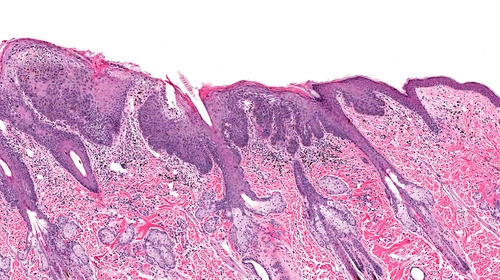Part B Insider (Multispecialty) Coding Alert
Uncertainty is Okay Under ICD-10

When you look forward to Oct. 1, you’ll be looking back at your existing signs/symptoms coding rules.
Although you may have heard that ICD-10 includes a code for every condition under the sun, that news may have been exaggerated. In reality, the new diagnosis coding system won’t always include the right codes for your patient’s conditions—particularly if the physician doesn’t reach a diagnosis at the visit.
CMS aimed to eliminate confusion about this situation and other issues with its new MLN Matters article SE1518, which the agency issued on June 9. Fortunately for those readers who have the ICD-9 guidelines memorized, the rules won’t change considerably when it comes to signs and symptoms coding after Oct. 1.
“In both ICD-9-CM and ICD-10-CM, sign/symptom and unspecified codes have acceptable, even necessary, uses,” the article said. “While you should report specific diagnosis codes when they are supported by the available medical record documentation and clinical knowledge of the patient’s health condition, in some instances sign/symptoms or unspecified codes are the best choice to accurately reflect the health care encounter.”
In short: As you did with ICD-9, if the physician makes a definitive diagnosis by the end of the encounter, you’ll report that code. But if not, you should report the signs and symptoms that prompted the visit—for instance, code a sore throat if strep throat is suspected but the test results aren’t in. You’d report a code from the “unspecified” range for situations such as a patient who is diagnosed with pneumonia but the test results indicating the specific type haven’t come in yet, the article said.
Don’t Over-Code Symptoms
Remember that if you do have a definitive diagnosis, you don’t need to report the signs and symptoms. For instance, if your patient has congestive heart failure with edema and shortness of breath, you would report 428.0 (Congestive heart failure, unspecified) or I50.9 (Heart failure, unspecified). You wouldn’t include symptom codes for the shortness of breath or edema because the conditions are integral to the definitive diagnosis (CHF).
No Definitive Diagnosis?
You’ll list symptom codes when the physician hasn’t identified a definitive diagnosis. Symptom codes describe problems a patient is experiencing, so they come in handy when the cause is uncertain.
For example: You are providing physical therapy including gait training for a patient who is experiencing falls of unknown etiology. In ICD-9, you would list the following codes for this patient:
- M1020a: V57.1 (Other physical therapy);
- M1022b: 781.2 (Abnormality of gait); and
- M1022c: V15.88 (History of fall).
In this case, you don’t have a more specific diagnosis and the symptom (abnormal gait) is the focus of your care.
ICD-10 difference: In ICD-10, there’s no equivalent to the therapy V57.x codes, so you’ll report the code for the underlying condition therapy is treating as your primary diagnosis. In this scenario, you would list:
- M1021a: R29.6 (Repeated falls) and
- M1022b: Z91.81 (History of falling).
ICD-10 code R29.6 is a welcome addition for patients experiencing repeated falls. You can report R29.6 if the patient has recently fallen and the reason for the falls is being investigated, she says. And you can add Z91.81 to indicate the patient has a history of falls.
Resolved Condition?
Another situation in which you’ll report a symptom code is when you need to avoid coding a disease or condition that has been resolved. For example, when providing aftercare for joint replacement surgery, you can’t code a disease process such as gangrene because the condition been corrected by the surgery.
In ICD-9, a symptom code can help justify the aftercare V code to further describe the patient’s care.
For example: You are providing physical therapy following a below-knee amputation of the patient’s right leg due to gangrene. The patient is receiving gait training as well as aftercare. Report the following ICD-9 codes:
-
M1020a: V58.49 (Other specified aftercare following surgery);
- M1022b: V49.75 (Lower limb amputation status; below knee); and
- M1022c: 781.2 (Abnormality of gait).
In ICD-10, for this patient, you would report:
-
M1021a: Z47.81 (Encounter for orthopedic aftercare following surgical amputation);
- M1023b: Z89.511 (Acquired absence of right leg below knee); and
- M1023c: R26.89 (Other abnormalities of gait and mobility).
Not Integral?
Some diagnoses can have symptoms that aren’t always part of the condition. When that’s the case for your patient, you should add the code for the symptom along with the condition. Be sure to take note of the coding guidelines regarding symptom coding: “Sequence the definitive diagnosis first, followed by the symptom code.”
For example: If your patient has Parkinson’s disease (332.0) and she is experiencing slurred speech (784.59) you would code both because not all Parkinson’s patients experience slurred speech. In ICD-10 you would list G20 (Parkinson’s disease) followed by R47.81 (Slurred speech).
Read the Notes for This Caveat
Occasionally, the coding manual will instruct you to also list codes for symptoms even when you know the definitive diagnosis.
For example: Suppose your patient has benign hypertrophy of the prostate (BPH) with urinary obstruction. You’ll code for this with 600.01 (Hypertrophy [benign] of prostate without urinary obstruction and other lower urinary tract symptoms [LUTS]). When you turn to the tabular listing, there is a sequencing instruction in both ICD-9 and ICD-10 to “use an additional code to identify symptoms” even though all the listed symptoms are integral to BPH with lower urinary tract symptoms (LUTS).
In ICD-10, you would list N40.1 (Enlarged prostate with lower urinary tract symptoms) and N13.8 (Other obstructive and reflux uropathy).
Resource: To read more about how to code signs and symptoms under ICD-10, see the MLN Matters article at www.cms.gov/Outreach-and-Education/Medicare-Learning-Network-MLN/MLNMattersArticles/Downloads/SE1518.pdf.
Related Articles
Part B Insider (Multispecialty) Coding Alert
- ICD-10:
Uncertainty is Okay Under ICD-10
When you look forward to Oct. 1, you’ll be looking back at your existing signs/symptoms [...] - Appeals:
Medicare Appeals Could Change Dramatically
Early stage appeals need to be more accurate.
Nearly everyone agrees that Medicare’s appeal [...] - Are Medicare Appeal Fees In Your Future?
OMHA proposals to shorten appeals timeframes could restrict your appeal rights, advocates warn.
- Appeals Timeframes Continue to Lengthen
Expect typical processing time for appeals decisions to exceed 540 days.
Due to the [...] - Part B Coding Coach:
Don't Let Faulty Coding Cut Into Your Laceration Repair Reimbursement
Find the right answers to these clinical scenarios.
Laceration repairs are among the most [...] - Physician Notes:
Physician Pays $105,000 to Settle Accusations That Staff Performed E/M Services
A doctor in Oklahoma is in hot water after the government accused him of letting [...]




